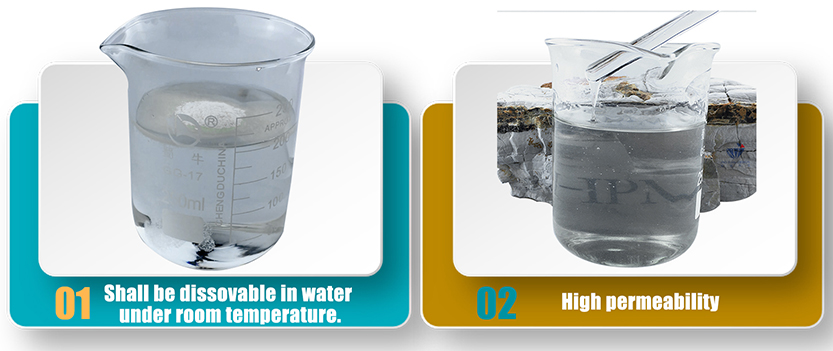
Juil . 11, 2024 15:13 Back to list
Glass transition temperature of HPMC and its correlation with polymer properties.
Glass transition temperature is an important parameter in the field of materials science, especially when it comes to polymers like Hydroxypropyl Methylcellulose (HPMC). HPMC is a widely used polymer in various applications such as pharmaceuticals, food, and construction due to its ability to provide viscosity, adhesion, and film-forming properties.
The glass transition temperature of HPMC is a key factor that determines its mechanical and thermal properties. The glass transition temperature is the temperature at which an amorphous polymer transitions from a glassy, rigid state to a rubbery, flexible state. In the case of HPMC, the glass transition temperature typically ranges from 50°C to 70°C, depending on the molecular weight and degree of substitution of the polymer.
Understanding the glass transition temperature of HPMC is crucial in its application. For example, in pharmaceutical formulations, the glass transition temperature of HPMC can influence the release profile of the drug from the dosage form. If the glass transition temperature is too close to the storage temperature of the formulation, it may lead to unwanted changes in the physical properties of the dosage form, affecting its efficacy.
In food applications, the glass transition temperature of HPMC plays a role in its stability and shelf-life

hpmc glass transition temperature. By knowing the glass transition temperature, food manufacturers can determine the best conditions for storing and handling HPMC-containing products to prevent degradation and maintain quality. In construction, the glass transition temperature of HPMC is important in determining the temperature range at which the material can be used effectively. For example, HPMC-based mortar or plaster will have different application and curing conditions based on its glass transition temperature. Overall, the glass transition temperature of HPMC is a critical parameter that must be considered in various applications to ensure the desired performance of the material. By understanding the relationship between the glass transition temperature and the properties of HPMC, researchers and engineers can optimize the formulation and processing conditions to achieve the desired performance of the material. In conclusion, the glass transition temperature of HPMC is a fundamental property that influences its behavior in different applications. By studying and controlling this parameter, researchers and manufacturers can harness the full potential of HPMC in various fields, leading to the development of innovative and high-performance products.

hpmc glass transition temperature. By knowing the glass transition temperature, food manufacturers can determine the best conditions for storing and handling HPMC-containing products to prevent degradation and maintain quality. In construction, the glass transition temperature of HPMC is important in determining the temperature range at which the material can be used effectively. For example, HPMC-based mortar or plaster will have different application and curing conditions based on its glass transition temperature. Overall, the glass transition temperature of HPMC is a critical parameter that must be considered in various applications to ensure the desired performance of the material. By understanding the relationship between the glass transition temperature and the properties of HPMC, researchers and engineers can optimize the formulation and processing conditions to achieve the desired performance of the material. In conclusion, the glass transition temperature of HPMC is a fundamental property that influences its behavior in different applications. By studying and controlling this parameter, researchers and manufacturers can harness the full potential of HPMC in various fields, leading to the development of innovative and high-performance products.
Latest news
-
Versatile Hpmc Uses in Different Industries
NewsJun.19,2025
-
Redispersible Powder's Role in Enhancing Durability of Construction Products
NewsJun.19,2025
-
Hydroxyethyl Cellulose Applications Driving Green Industrial Processes
NewsJun.19,2025
-
Exploring Different Redispersible Polymer Powder
NewsJun.19,2025
-
Choosing the Right Mortar Bonding Agent
NewsJun.19,2025
-
Applications and Significance of China Hpmc in Modern Industries
NewsJun.19,2025
Related PRODUCTS







